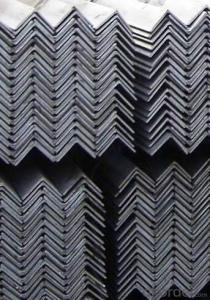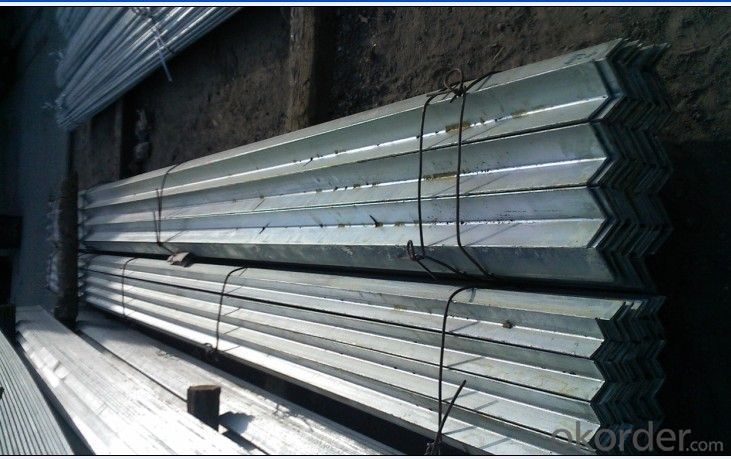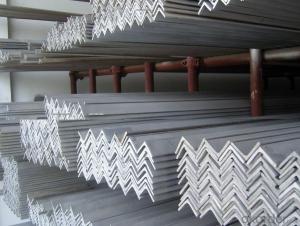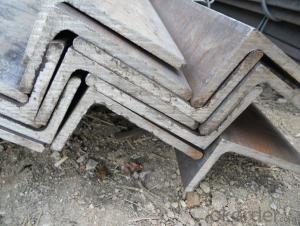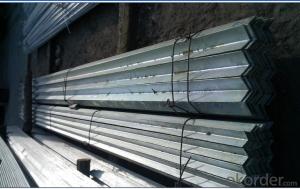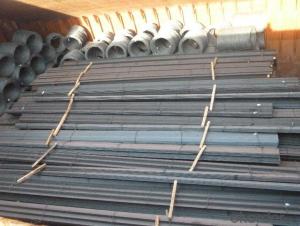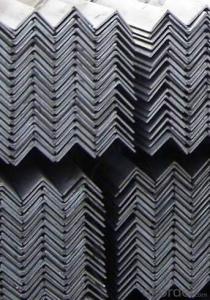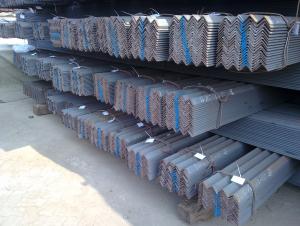DIN STANDARD HIGH QUALITY HOT ROLLED ANGLE
- Loading Port:
- Tianjin
- Payment Terms:
- TT OR LC
- Min Order Qty:
- 50 m.t.
- Supply Capability:
- 100000 m.t./month
OKorder Service Pledge
OKorder Financial Service
You Might Also Like
Product Description
Appearance: Black
Technique: Slitting hot rolled steel coil
Grade: Q235, Q195,A36 SS400 S235jr.St37-2
Standard: AISI,GB,DIN,ASTM,EN,JIS
Length: 6m, 9m, 12m or as your requirement.
Width: 10mm-1010mm
Thickness: 1.5mm-20mm
Business type: big manufacture
Place of origin: Tianjin China (Mainland)
Packaging Details: In bundles for exporting and sea worthy
Delivery Detail: Within 15-35 days after receiving L/C or deposite T/T
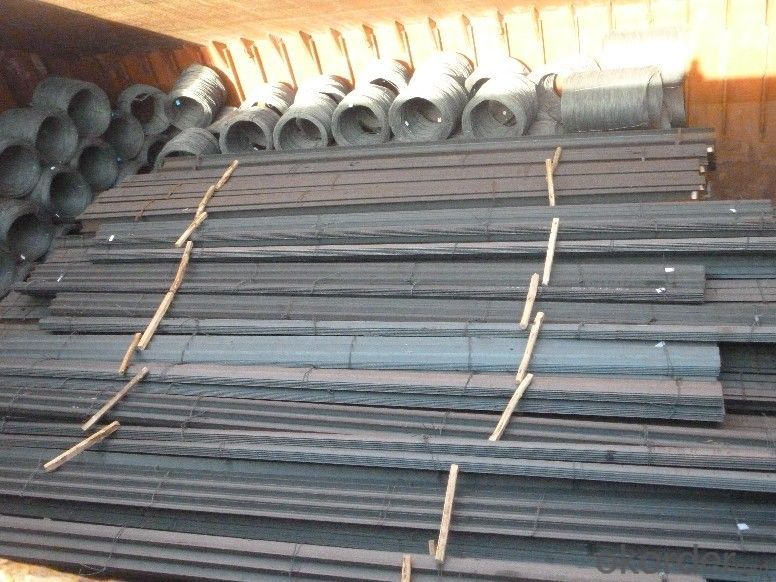
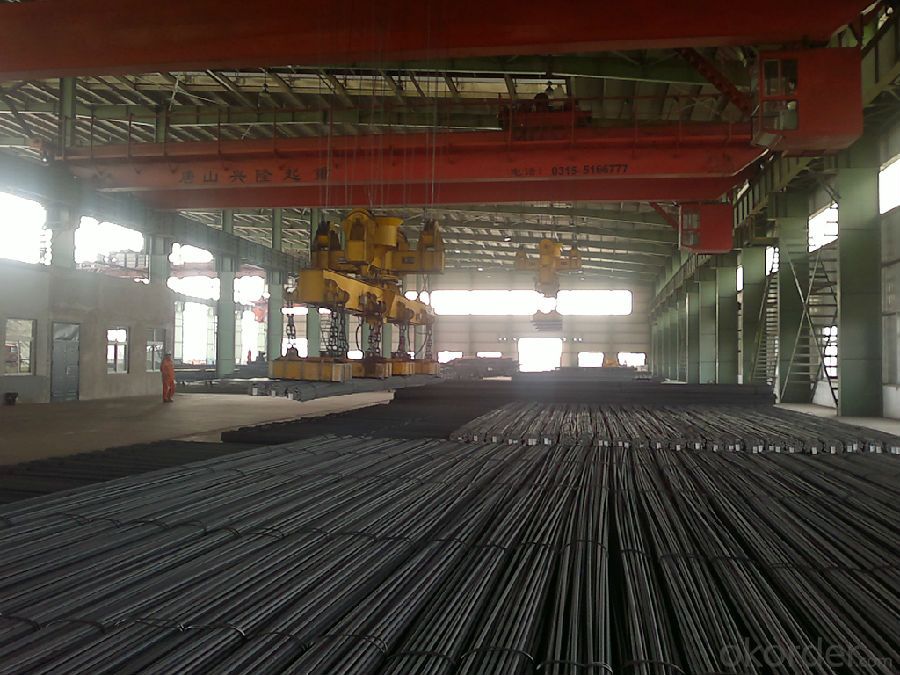
General specification as below:
Flat Bar Specification | |||
Width (mm) | Thickness (mm) | Length (m) | Theoretical Weight (kg/m) |
20 | 2.0 | 6/9/12 | 0.31 |
20 | 2.5 | 6/9/12 | 0.39 |
20 | 2.75 | 6/9/12 | 0.43 |
25 | 2.5 | 6/9/12 | 0.49 |
25 | 3.75 | 6/9/12 | 0.74 |
30 | 2.5 | 6/9/12 | 0.59 |
30 | 3.5 | 6/9/12 | 0.82 |
30 | 9.75 | 6/9/12 | 2.30 |
40 | 3.5 | 6/9/12 | 1.10 |
40 | 4.75 | 6/9/12 | 1.50 |
40 | 11.75 | 6/9/12 | 3.69 |
50 | 2.75 | 6/9/12 | 1.08 |
50 | 4.5 | 6/9/12 | 1.77 |
50 | 9.75 | 6/9/12 | 3.83 |
60 | 5.5 | 6/9/12 | 2.60 |
60 | 7.5 | 6/9/12 | 3.53 |
60 | 11.5 | 6/9/12 | 5.42 |
80 | 5.5 | 6/9/12 | 3.45 |
80 | 7.5 | 6/9/12 | 4.71 |
80 | 11.75 | 6/9/12 | 7.38 |
100 | 3.25 | 6/9/12 | 2.55 |
100 | 4.75 | 6/9/12 | 3.73 |
100 | 7.5 | 6/9/12 | 5.89 |
120 | 9.75 | 6/9/12 | 9.18 |
120 | 11.75 | 6/9/12 | 11.07 |
150 | 9.75 | 6/9/12 | 11.48 |
150 | 11.5 | 6/9/12 | 13.54 |
150 | 13.5 | 6/9/12 | 15.90 |
160 | 11.75 | 6/9/12 | 14.76 |
200 | 9.5 | 6/9/12 | 14.92 |
250 | 5.75 | 6/9/12 | 11.28 |
340 | 7.75 | 6/9/12 | 20.68 |
Products Advantages
1. high quality competitive price and Accurate in size
2. high dimensional accuracy
3. Guaranteed raw material
4.high utilization rate of material
5.convenient in construction, saving much time and labor
6. high mechanical strength
Application: Widely used for construction, Ship building, Machinery manufacturing ,steel structure,agriculture and steel grating.
- Q: Can steel angles be used for transportation infrastructure projects?
- Yes, steel angles can be used for transportation infrastructure projects. Steel angles are commonly used in the construction of bridges, highways, and railway structures due to their strength, durability, and ability to withstand heavy loads. They provide necessary support and stability to various components of transportation infrastructure, making them an ideal choice for such projects.
- Q: Can steel angles be welded together?
- Yes, steel angles can be welded together. Welding is a common method used to join steel angles, as well as other steel components, in various industries. This process involves melting the base metals to be joined and adding a filler material to create a strong and permanent bond. Welding angles together allows for the creation of structural connections, support frames, and other applications where a strong and durable joint is required. Welding techniques such as MIG (Metal Inert Gas) welding, TIG (Tungsten Inert Gas) welding, or stick welding can be used depending on the specific requirements of the project. It is important to follow proper welding procedures, including selecting appropriate welding techniques, using the correct welding consumables, and ensuring proper preparation and alignment of the steel angles, to achieve successful and reliable welded joints.
- Q: What are the different types of steel angles used in structural engineering?
- Steel angles are commonly utilized in structural engineering for their versatility and strength. They are available in various shapes and sizes, typically made from carbon steel or stainless steel, to suit specific structural applications. The following are some of the types of steel angles frequently used in this field: 1. L-Shaped Angles: These angles, also known as equal leg angles, have equal dimensions for both legs, resulting in a 90-degree angle. They are commonly employed as structural components in building frames, supports, and bracing systems. 2. Unequal Leg Angles: Unlike equal leg angles, these angles have differing lengths for each leg, resulting in an unequal angle. They are often used when a larger load-bearing capacity or specific structural requirements are necessary. 3. Angle Iron: Angle iron is a broad term encompassing various steel angles that have been rolled into a 90-degree angle. It is frequently used as a structural element in construction projects, such as framing, bracing, and supports. 4. Slotted Angles: Slotted angles are a variation of angle iron that feature holes or slots along the length of the angle. These holes allow for flexibility in attaching other structural components or accessories, making them versatile for shelving, racks, and workbenches. 5. Stainless Steel Angles: Stainless steel angles are fabricated from corrosion-resistant stainless steel alloys. They are commonly employed in applications where strength, durability, and resistance to corrosion are crucial, such as in the marine, food processing, and chemical industries. 6. Rolled Steel Angles: Rolled steel angles are produced by rolling steel plates or sheets to form an angled shape. They are widely used in construction projects due to their high strength-to-weight ratio and cost-effectiveness. 7. Structural Steel Angles: Structural steel angles are specifically designed for structural applications, such as supporting beams, columns, and trusses. They are typically manufactured from high-strength carbon steel and are available in various sizes and thicknesses to meet specific load-bearing requirements. In conclusion, the diverse range of steel angles used in structural engineering offers engineers numerous options to design and construct robust and efficient structures. The selection of the appropriate angle depends on factors such as load requirements, structural design, and environmental conditions.
- Q: What does 50*50*5 angle mean?
- Standard Specification for angle iron: indicated by width mm * width * * edge mm.
- Q: What are the different types of surface finishes available for steel angles?
- Steel angles offer a variety of surface finishes, each with its own unique qualities and advantages. Firstly, there is the mill finish, which is the most basic and commonly used surface finish. It showcases the steel in its raw and untreated state, with potential imperfections and roughness. This finish is typically utilized for structural purposes where aesthetics are not a priority. Another option is hot-dip galvanization, where the steel angle is submerged in molten zinc to create a protective coating against corrosion. This finish is ideal for outdoor or corrosive environments, as it offers high resistance to rust. Powder coating is a popular process in which a dry powder is electrostatically applied to the steel angle and then cured under heat. This results in a durable and visually appealing finish that is highly resistant to chipping, scratching, and fading. Powder coated steel angles are commonly seen in architectural and decorative applications. Painting is another possibility, with various types of paint, such as epoxy, enamel, or acrylic, being applied to the steel angle. This not only enhances the appearance but also provides a protective layer. However, painted surfaces may be more prone to chipping and require regular maintenance. For those seeking a naturally smooth and polished surface, stainless steel angles are an excellent choice. These angles are resistant to corrosion and staining, making them suitable for industries like food processing, pharmaceuticals, and marine environments. Lastly, shot blasting is a surface treatment process that involves bombarding steel angles with small metallic or non-metallic particles at high speed. This effectively removes rust, scale, and contaminants, resulting in a clean and roughened finish. Shot blasting prepares the steel angle for subsequent coating or painting. These examples highlight the diverse range of surface finishes available for steel angles. The choice of finish depends on specific requirements such as corrosion resistance, aesthetics, durability, and cost.
- Q: Is there a screw that can be made like angle iron, but not a right angle, just a single piece of material? That's the way to break the angle iron in two. What if it's called? Thank you, professionals!
- Wear protective gloves and glasses when cutting, because metal chips can hurt people, especially the eyes. Ha ha, I hope to help you.
- Q: How are steel angles measured?
- Steel angles are measured using two main dimensions: the length of each leg and the thickness of the material. The length of each leg refers to the distance from the intersection point of the two legs to the end of each leg. This measurement is usually expressed in inches or millimeters. The thickness of the material, also known as the gauge, is the measurement of the width of the steel angle. It is typically expressed in fractions of an inch or in millimeters. To provide a comprehensive measurement, steel angles are often described using a combination of these two dimensions. For example, a common specification could be "2 x 2 x 1/4," indicating that the steel angle has legs measuring 2 inches in length, a thickness of 1/4 inch, and both legs are equal in length. It is important to note that steel angles can be measured differently depending on the specific industry or region. Some industries may use metric measurements, while others may use imperial measurements. Therefore, it is always advisable to verify the measuring standards used in a particular context to ensure accurate understanding and communication.
- Q: What are the different types of connections used for steel angles in architectural applications?
- Architectural applications utilize various connections for steel angles. Among the commonly used types are: 1. Welded connections: Steel angles are connected through welding, a method that involves melting and joining the base metals using heat. Welded connections offer exceptional strength and rigidity, making them ideal for heavy-duty tasks. 2. Bolted connections: This type involves securing steel angles using bolts, nuts, and washers. It allows for effortless assembly and disassembly, making it a preferred choice when flexibility or future modifications are required. 3. Riveted connections: Riveting involves utilizing metal pins known as rivets to join steel angles. This technique provides a durable and robust connection, especially suitable for structures exposed to high loads or vibrations. 4. Adhesive connections: Industrial adhesives are used to bond the steel angles together. This method is often combined with other connection types to enhance strength and resistance against shear forces. 5. Slot and tab connections: This approach entails creating slots or tabs on the steel angles, allowing them to interlock and form a secure connection. It is commonly employed in lightweight architectural applications where aesthetic considerations are crucial. Each connection type possesses its own advantages and disadvantages, and the selection depends on factors such as the specific architectural application, load requirements, installation ease, and aesthetic factors. Architects and engineers meticulously evaluate these factors to determine the most suitable connection type for steel angles in each project.
- Q: Can steel angles be used in agricultural or farm applications?
- Yes, steel angles can be used in agricultural or farm applications. Steel angles are versatile and durable structural components that are commonly used in various industries, including agriculture. They can be utilized in farm equipment, such as machinery frames, trailers, and fences. Steel angles are ideal for these applications due to their strength and stability, which can withstand heavy loads and harsh weather conditions. Additionally, they can be easily welded, bolted, or fastened together, allowing for easy customization and construction of various agricultural structures. Overall, steel angles are a reliable and practical choice for agricultural and farm applications.
- Q: Can steel angles be used in overhead crane or hoist systems?
- Yes, steel angles can be used in overhead crane or hoist systems. They are commonly used as structural components to support and reinforce the various parts of the system, such as the crane bridge, runway beams, and trolley frames. Steel angles provide strength, stability, and durability, making them suitable for withstanding the heavy loads and dynamic forces associated with crane and hoist operations.
Send your message to us
DIN STANDARD HIGH QUALITY HOT ROLLED ANGLE
- Loading Port:
- Tianjin
- Payment Terms:
- TT OR LC
- Min Order Qty:
- 50 m.t.
- Supply Capability:
- 100000 m.t./month
OKorder Service Pledge
OKorder Financial Service
Similar products
Hot products
Hot Searches
Related keywords
